-
 Bitcoin
Bitcoin $83,309.8774
-1.88% -
 Ethereum
Ethereum $1,591.3660
-2.42% -
 Tether USDt
Tether USDt $0.9998
-0.01% -
 XRP
XRP $2.0864
-2.28% -
 BNB
BNB $580.9809
-0.68% -
 Solana
Solana $125.6682
-3.01% -
 USDC
USDC $0.9999
0.00% -
 TRON
TRON $0.2516
0.03% -
 Dogecoin
Dogecoin $0.1542
-3.08% -
 Cardano
Cardano $0.6142
-3.69% -
 UNUS SED LEO
UNUS SED LEO $9.3431
-0.92% -
 Chainlink
Chainlink $12.3641
-2.37% -
 Avalanche
Avalanche $18.8865
-5.31% -
 Stellar
Stellar $0.2358
-2.40% -
 Toncoin
Toncoin $2.8805
-0.91% -
 Shiba Inu
Shiba Inu $0.0...01169
-1.89% -
 Sui
Sui $2.1008
-4.00% -
 Hedera
Hedera $0.1574
-5.48% -
 Bitcoin Cash
Bitcoin Cash $318.9019
-1.04% -
 Litecoin
Litecoin $75.9077
-2.52% -
 Polkadot
Polkadot $3.5432
-3.69% -
 Dai
Dai $1.0000
0.00% -
 Bitget Token
Bitget Token $4.2538
-1.47% -
 Hyperliquid
Hyperliquid $15.1227
-5.40% -
 Ethena USDe
Ethena USDe $0.9991
0.00% -
 Pi
Pi $0.6199
-16.77% -
 Monero
Monero $217.3319
2.19% -
 Uniswap
Uniswap $5.2227
-2.58% -
 OKB
OKB $52.2436
1.28% -
 Pepe
Pepe $0.0...07082
-3.62%
How to calculate the payback period of mining?
Calculating the payback period for crypto mining involves initial investment, operational costs, revenue, mining difficulty, and block rewards, taking about 320.51 days to break even.
Apr 10, 2025 at 03:00 pm
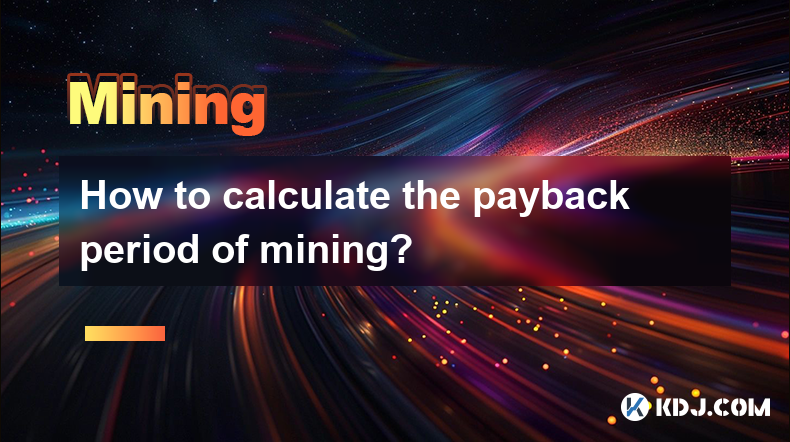
Calculating the payback period of mining is a crucial step for any cryptocurrency miner looking to understand the financial viability of their operations. The payback period is the time it takes for the revenue generated from mining to cover the initial investment costs. This calculation involves several factors, including the cost of mining equipment, electricity costs, mining difficulty, and the price of the cryptocurrency being mined. In this article, we will delve into the detailed process of calculating the payback period for mining operations.
Understanding the Components of Payback Period Calculation
To accurately calculate the payback period, it is essential to understand the key components that affect this calculation. These components include:
- Initial Investment: This includes the cost of purchasing mining hardware such as ASIC miners or GPUs, as well as any additional setup costs like cooling systems or mining rigs.
- Operational Costs: The primary operational cost for miners is electricity. The cost per kilowatt-hour (kWh) can vary significantly depending on the location and the efficiency of the mining equipment.
- Revenue: The revenue from mining is determined by the amount of cryptocurrency mined and the current market price of that cryptocurrency.
- Mining Difficulty: This is a measure of how difficult it is to find a new block, which directly affects the amount of cryptocurrency that can be mined in a given period.
- Block Reward: The amount of cryptocurrency awarded for successfully mining a new block.
Calculating the Initial Investment
The first step in calculating the payback period is to determine the total initial investment. This includes the cost of the mining hardware and any additional setup costs. For example, if you are purchasing an ASIC miner for Bitcoin mining, you might spend around $2,000 on the hardware and an additional $500 on setup costs, resulting in a total initial investment of $2,500.
Estimating Operational Costs
Operational costs, particularly electricity, play a significant role in the payback period calculation. To estimate these costs, you need to know the power consumption of your mining equipment and the cost of electricity in your area. For instance, if your ASIC miner consumes 3,000 watts and the cost of electricity is $0.10 per kWh, you can calculate the daily electricity cost as follows:
- Daily Electricity Cost = (3,000 watts / 1,000) 24 hours $0.10/kWh = $7.20 per day
Calculating Revenue from Mining
The revenue from mining depends on the amount of cryptocurrency mined and its current market price. To calculate this, you need to know the hash rate of your mining equipment and the current mining difficulty. For example, if your ASIC miner has a hash rate of 14 TH/s and the current Bitcoin mining difficulty is 20 trillion, you can estimate the number of Bitcoins mined per day using a mining calculator. Let's assume you mine 0.0005 BTC per day and the current price of Bitcoin is $30,000, your daily revenue would be:
- Daily Revenue = 0.0005 BTC * $30,000/BTC = $15 per day
Determining the Payback Period
With the initial investment, operational costs, and daily revenue calculated, you can now determine the payback period. The payback period is the time it takes for the cumulative revenue to equal the initial investment. To calculate this, you need to subtract the daily operational costs from the daily revenue to find the net daily profit, and then divide the initial investment by the net daily profit.
- Net Daily Profit = Daily Revenue - Daily Operational Costs = $15 - $7.20 = $7.80 per day
- Payback Period = Initial Investment / Net Daily Profit = $2,500 / $7.80 = 320.51 days
This means it would take approximately 320.51 days for the mining operation to break even.
Adjusting for Mining Difficulty and Block Reward Changes
It's important to note that mining difficulty and block rewards can change over time, which can affect the payback period. Mining difficulty typically increases as more miners join the network, making it harder to mine new blocks. Additionally, block rewards for some cryptocurrencies, like Bitcoin, are designed to halve at regular intervals. These changes can impact the amount of cryptocurrency mined and, consequently, the revenue and payback period.
To account for these changes, miners often use mining calculators that allow them to input different scenarios and see how changes in mining difficulty and block rewards might affect their payback period. For example, if the mining difficulty increases by 10%, the number of Bitcoins mined per day might decrease to 0.00045 BTC per day, reducing the daily revenue to $13.50. This would increase the payback period to:
- New Net Daily Profit = $13.50 - $7.20 = $6.30 per day
- New Payback Period = $2,500 / $6.30 = 396.83 days
Frequently Asked Questions
Q: How can I reduce the payback period of my mining operation?
A: To reduce the payback period, you can focus on several strategies. First, you can try to reduce your operational costs by using more energy-efficient mining equipment or relocating to an area with lower electricity costs. Second, you can increase your mining efficiency by joining a mining pool, which can help you mine more cryptocurrency more consistently. Finally, you can monitor the cryptocurrency market closely and sell your mined coins when the price is high to maximize your revenue.
Q: What are the risks associated with mining that could affect the payback period?
A: There are several risks that could impact the payback period of mining. These include fluctuations in cryptocurrency prices, changes in mining difficulty, and potential hardware failures. Additionally, regulatory changes in your country could affect the legality and profitability of mining. It's important to stay informed about these factors and adjust your mining strategy accordingly.
Q: Can I use different cryptocurrencies to calculate the payback period?
A: Yes, you can calculate the payback period for mining different cryptocurrencies. The process remains the same, but you will need to adjust the variables such as the block reward, mining difficulty, and the current market price of the cryptocurrency you are mining. For example, if you are mining Ethereum instead of Bitcoin, you would use the Ethereum block reward and the current price of Ethereum in your calculations.
Q: How often should I recalculate the payback period for my mining operation?
A: It's a good practice to recalculate the payback period regularly, especially if there are significant changes in the cryptocurrency market or in your mining setup. Many miners recalculate their payback period monthly or whenever there is a notable change in mining difficulty, block rewards, or cryptocurrency prices. This helps them stay on top of their financial projections and make informed decisions about their mining operations.
Disclaimer:info@kdj.com
The information provided is not trading advice. kdj.com does not assume any responsibility for any investments made based on the information provided in this article. Cryptocurrencies are highly volatile and it is highly recommended that you invest with caution after thorough research!
If you believe that the content used on this website infringes your copyright, please contact us immediately (info@kdj.com) and we will delete it promptly.
- Movement Labs and the Movement Network Foundation have launched an independent investigation into recent market-making irregularities related to the MOVE token.
- 2025-04-16 09:15:12
- Shiba Inu (SHIB) burn rate saw an over 2000% hike, leading to the removal of 20.83 million tokens from circulation.
- 2025-04-16 09:15:12
- Securitize Acquires MG Stover's Fund Administration Business to Become the Largest Digital Asset Fund Administrator
- 2025-04-16 09:10:12
- Trump administration plans to present Congress with cuts to most funding for public media
- 2025-04-16 09:10:12
- XRP (XRP) Displays Promising Growth Potential as It Currently Trades Above $2.00 and the 21-week EMA
- 2025-04-16 09:05:13
- BYDFi Lists $KERNEL, the Governance Token of KernelDAO, with Spot Trading Now Live
- 2025-04-16 09:05:13
Related knowledge
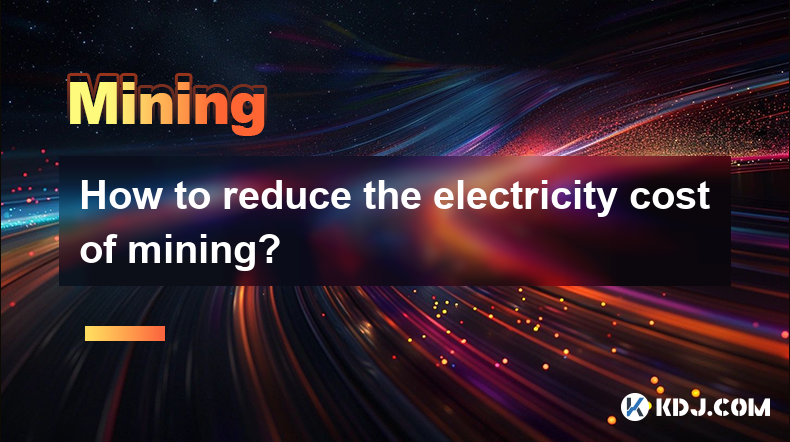
How to reduce the electricity cost of mining?
Apr 16,2025 at 08:42am
Mining cryptocurrencies, particularly Bitcoin, is an energy-intensive process that can lead to significant electricity costs. However, there are several strategies that miners can employ to reduce these expenses and make their operations more cost-effective. In this article, we will explore various methods to minimize the electricity cost of mining. Cho...
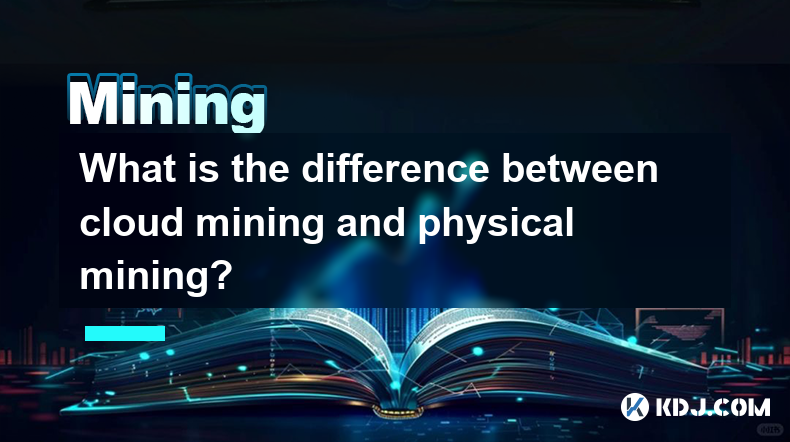
What is the difference between cloud mining and physical mining?
Apr 16,2025 at 01:49am
What is the difference between cloud mining and physical mining? In the world of cryptocurrencies, mining is the process by which new coins are generated and transactions are verified and added to the blockchain. There are two primary methods of mining: cloud mining and physical mining. Understanding the differences between these two approaches can help...
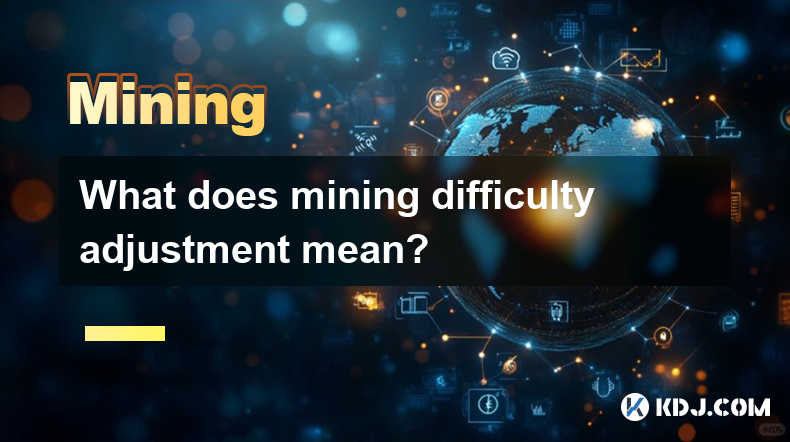
What does mining difficulty adjustment mean?
Apr 16,2025 at 12:42am
What does mining difficulty adjustment mean? Mining difficulty adjustment is a crucial mechanism in blockchain networks, particularly in Proof of Work (PoW) systems like Bitcoin. It ensures that the rate at which new blocks are added to the blockchain remains consistent, despite fluctuations in the total computational power (hash rate) of the network. T...
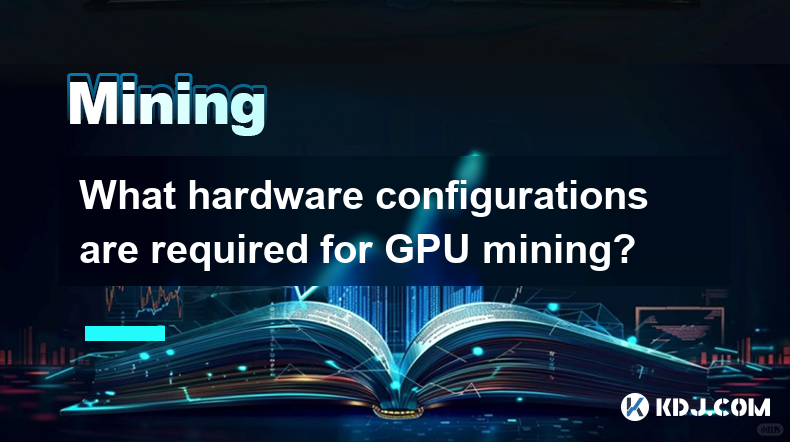
What hardware configurations are required for GPU mining?
Apr 16,2025 at 09:21am
GPU mining has become a popular method for cryptocurrency enthusiasts to mine various cryptocurrencies, such as Ethereum, Ravencoin, and others. To successfully engage in GPU mining, it is essential to understand the hardware configurations required to maximize efficiency and profitability. This article will delve into the specifics of what you need to ...
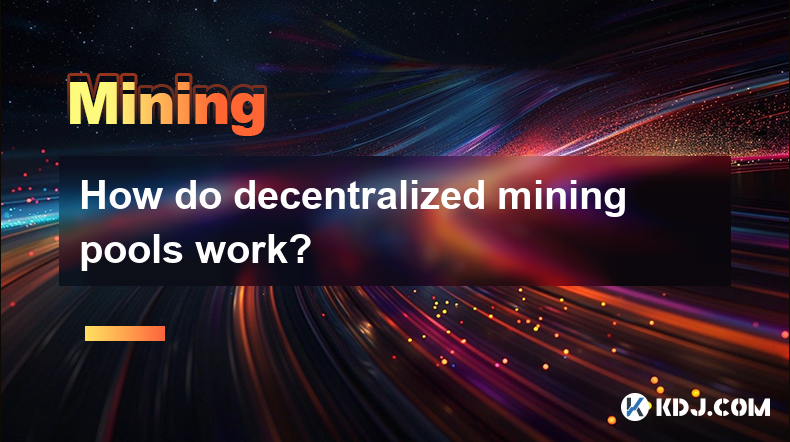
How do decentralized mining pools work?
Apr 16,2025 at 05:42am
Decentralized mining pools represent a significant evolution in the world of cryptocurrency mining, offering a more democratic and transparent approach compared to traditional centralized pools. In this article, we will explore the mechanics of decentralized mining pools, their benefits, and how they operate within the cryptocurrency ecosystem. What are...
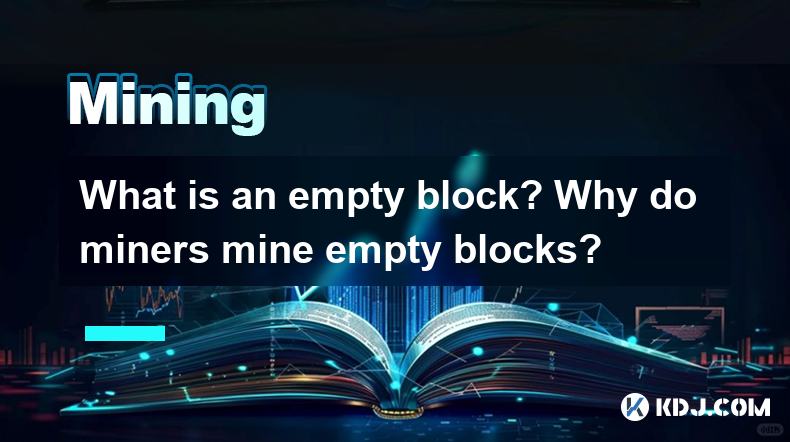
What is an empty block? Why do miners mine empty blocks?
Apr 16,2025 at 01:28am
What is an Empty Block?An empty block in the context of blockchain technology, particularly in cryptocurrencies like Bitcoin, refers to a block that contains no transactions other than the coinbase transaction. The coinbase transaction is a special transaction in which new bitcoins are generated and awarded to the miner who successfully mines the block....

How to reduce the electricity cost of mining?
Apr 16,2025 at 08:42am
Mining cryptocurrencies, particularly Bitcoin, is an energy-intensive process that can lead to significant electricity costs. However, there are several strategies that miners can employ to reduce these expenses and make their operations more cost-effective. In this article, we will explore various methods to minimize the electricity cost of mining. Cho...

What is the difference between cloud mining and physical mining?
Apr 16,2025 at 01:49am
What is the difference between cloud mining and physical mining? In the world of cryptocurrencies, mining is the process by which new coins are generated and transactions are verified and added to the blockchain. There are two primary methods of mining: cloud mining and physical mining. Understanding the differences between these two approaches can help...

What does mining difficulty adjustment mean?
Apr 16,2025 at 12:42am
What does mining difficulty adjustment mean? Mining difficulty adjustment is a crucial mechanism in blockchain networks, particularly in Proof of Work (PoW) systems like Bitcoin. It ensures that the rate at which new blocks are added to the blockchain remains consistent, despite fluctuations in the total computational power (hash rate) of the network. T...

What hardware configurations are required for GPU mining?
Apr 16,2025 at 09:21am
GPU mining has become a popular method for cryptocurrency enthusiasts to mine various cryptocurrencies, such as Ethereum, Ravencoin, and others. To successfully engage in GPU mining, it is essential to understand the hardware configurations required to maximize efficiency and profitability. This article will delve into the specifics of what you need to ...

How do decentralized mining pools work?
Apr 16,2025 at 05:42am
Decentralized mining pools represent a significant evolution in the world of cryptocurrency mining, offering a more democratic and transparent approach compared to traditional centralized pools. In this article, we will explore the mechanics of decentralized mining pools, their benefits, and how they operate within the cryptocurrency ecosystem. What are...

What is an empty block? Why do miners mine empty blocks?
Apr 16,2025 at 01:28am
What is an Empty Block?An empty block in the context of blockchain technology, particularly in cryptocurrencies like Bitcoin, refers to a block that contains no transactions other than the coinbase transaction. The coinbase transaction is a special transaction in which new bitcoins are generated and awarded to the miner who successfully mines the block....
See all articles























































































